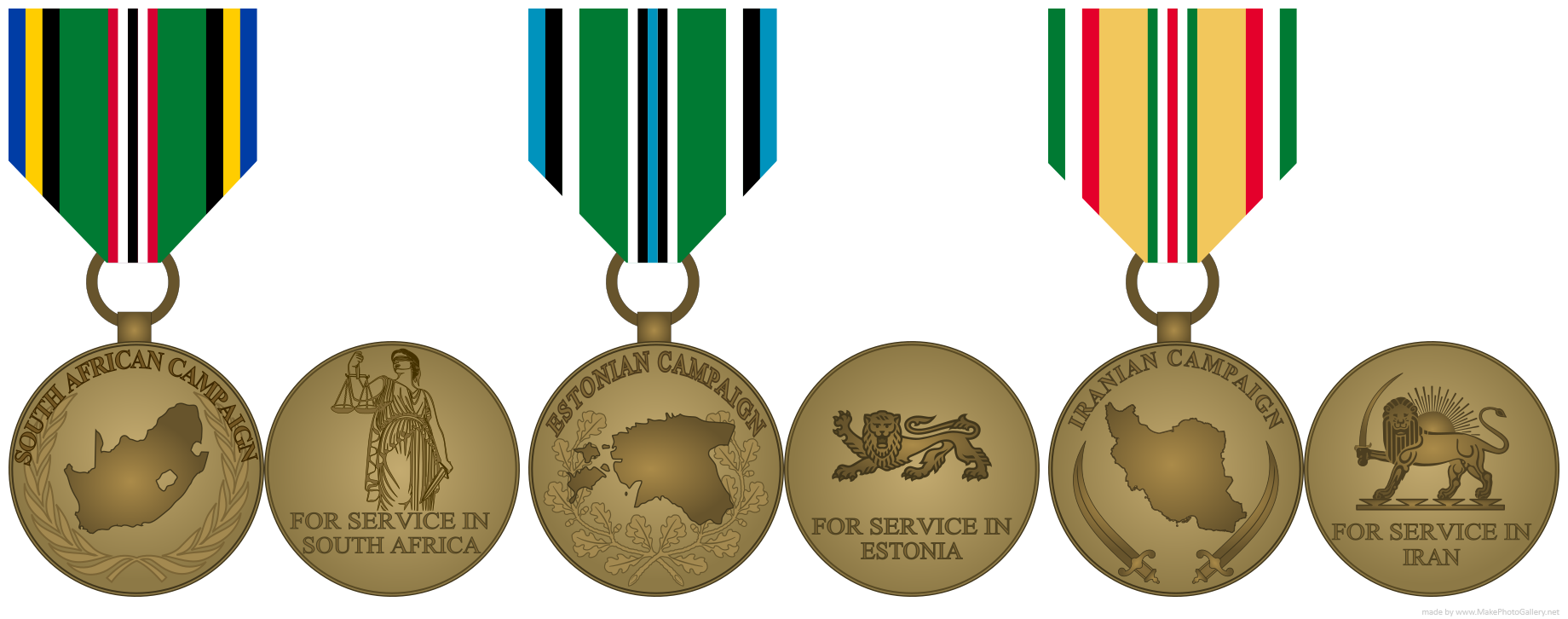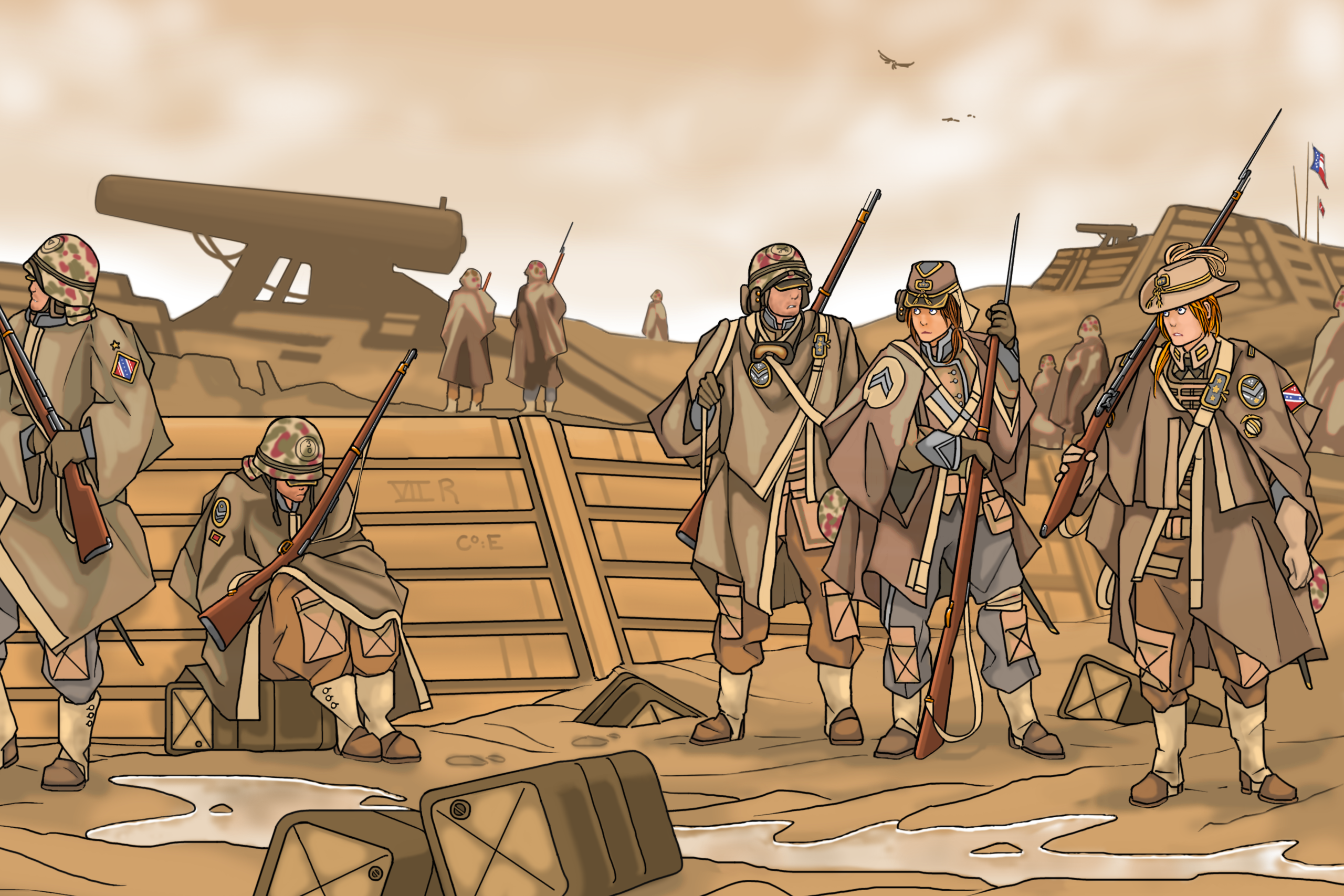sci-fi insignias and uniforms have been posted in the past so it shouldn't be an issue.
Good to know. So, with that out of the way, here's my complete revamp of the Imperial Military Rank Structure (Parts 1 and 2):
Part 1 here being what I started out with first, working on (columns from left to right) the Imperial Navy, Imperial Army, Imperial Intelligence, Regional Administration, and the Imperial Security Bureau, the Stormtrooper Corps and Starfighter Corps not included here as I had yet to come up with a satisfactory color scheme at the time.
I sorted the color scheme here according to branch, then sorted the ranks according to ascending number of color squares; additionally, the background colors of each section also represent branch uniforms: Blue squares represent Navy, Gold squares represent Army, Red squares represent Intelligence, Dark Grey/Onyx squares represent Regional Administration, and Medium Grey+Light Grey squares represent ISB.
The rank plaques containing color squares of different branches represent the ability of those ranks to call upon the resources of their counterpart branches: Grand Admirals, Grand Generals, and the Director of Imperial Intelligence can all request or requisition any units, task forces, or other materiel they may require should the need arise; likewise, Regional Administrators can also call upon Navy or Army assets for assistance if necessary, however the forces available to them is limited to the scope of their authority (Planetary Governors can only request Navy/Army assets within their home system/planet, the same with Sector Moffs with assets within their Sectors, while Grand Moffs have the widest purview in that they can request assets from every Sector within their Oversector). Grand Admirals/Generals and the Director of Intelligence have no such limitations regarding jurisdiction, and thus can command any fleets, armies, or other military assets across multiple Oversectors. The ISB, on the other hand, has
carte blanche in regards to investigation powers over the other branches; there is however the unconventional ranks of the ISB Special Agents, meant to carry out specific tasks or missions that require specialized skillsets.
The Ranks for the Regional Administration positions - Grand Moff, Sector Moff, and Planetary Governor - are simple enough to understand: Grand Moffs govern Oversectors, which are subdivided into Sectors governed by Sector Moffs, and the individual planets within those Sectors are governed by Planetary Governors. The the pure-onyx square ranks below the Reg-Admin box are more nebulous, as I hadn't quite fleshed them out yet, but they're generally meant to be corresponding adjutant positions for the aforementioned Admin ranks, and do not have the authority to call upon military services or assets; the two-square ranks with onyx+blue/gold/red squares are basically supposed to be liaison attaches meant to serve as direct/indirect links between the Reg-Admin authorities and the corresponding military branches.
As for the ranks of the Navy, Army, and Intelligence (divided between Navy and Army branches), they are as follows, from highest to lowest:
| Grand Admiral | Grand General | Director of Imperial Intelligence | Director of Imperial Intelligence |
| Admiral | General | Director of Navy Intelligence | Director of Army Intelligence |
| Vice Admiral | Lieutenant General | Regional Branch Director (Navy) | Regional Branch Director (Army) |
| Rear Admiral | Major General | Admiral | General |
| Commodore | Brigadier General | Commander | Commander |
| Captain | Colonel | Captain | Captain |
| Commander | Major | Lieutenant | Lieutenant |
| Lieutenant Commander | Captain | Specialist | Specialist |
| Senior Lieutenant | Senior Lieutenant | | |
| Junior Lieutenant | Junior Lieutenant | | |
| Ensign | N/A [Name Pending] | | |
The Imperial Security Bureau has their own separate set of ranks, which are as follows, again from highest to lowest:
| Director of Imperial Security Bureau | Director of Imperial Security Bureau |
| ISB Deputy Director | Chief Inspector/Inspector-General |
| ISB Branch Director | Captain-Inspector |
| ISB Colonel | Lieutenant-Inspector |
| ISB Commander | |
| ISB Lieutenant | |
| Senior Special Agent (Navy Attache) | Senior Special Agent (Army Attache) | Senior Special Agent (Intelligence Attache) |
| Special Agent (Navy Attache) | Special Agent (Army Attache) | Special Agent (Intelligence Attache) |
The ISB ranks are a bit of a special case in that the promotion path splits upon reaching the rank ISB Colonel: there are two options for advancement available - there's the standard route through the ISB's usual 'secret police' duties, and there's the Inspectorate, which deals in more
actual investigative policing and protocol inspection. The ISB Special Agent ranks have already been explained earlier in the post, so I don't need to repeat it.
Part 2 is the Stormtrooper Corps and the Starfighter Corps (otherwise known as the Pilots), which I made at a later point in time to the previous layout above after some extensive brainstorming and experimentation with different colors and plaque designs:
The
looong column on the left is for the Stormtrooper Corps, and the short column on the right is for Pilots, split into Navy Pilots and Army Pilots.
I haven't quite nailed down the exact naming scheme for the Stormtrooper Corps ranks yet, but what I have in mind for the highest two ranks are Allegiant General and General, with the lowest rank being Private. This time I actually accounted for enlisted and NCO ranks, something that was lacking in my previous attempt earlier in this post. Stormtroopers get their own separate rank structure from the Imperial Army due to being elite forces directly under the authority of the Emperor himself, so they get special treatment.
For the Pilot ranks, the naming scheme here is also a work in progress, but the basic structure is: Pilot --> Flight Lieutenant --> Squadron Captain --> Group Major --> Wing Commander. Wing Commanders are equivalent to Navy Commanders/Army Majors, and so are subordinate to Navy Captains/Army Colonels and up. Seeing as how starfighters are dependent on their motherships in space combat, and ground combat involves combined-arms warfare on a planetary scale, I saw no reason to develop a fully-independent "Air Force" rank structure, instead opting to make starfighters an integrated component to both the Navy and Army of the Imperial Military. Starfighter pilots and officers in both branches share the same rank structure, however, and can be transferred between each other easily, with merely a swap of the corresponding rank plaque being the only visible change.
The original posts for both of these rank structure redesigns can be found
here and
here over on Spacebattles (the content you see above having been copy+pasted from there).


becg.gif)



